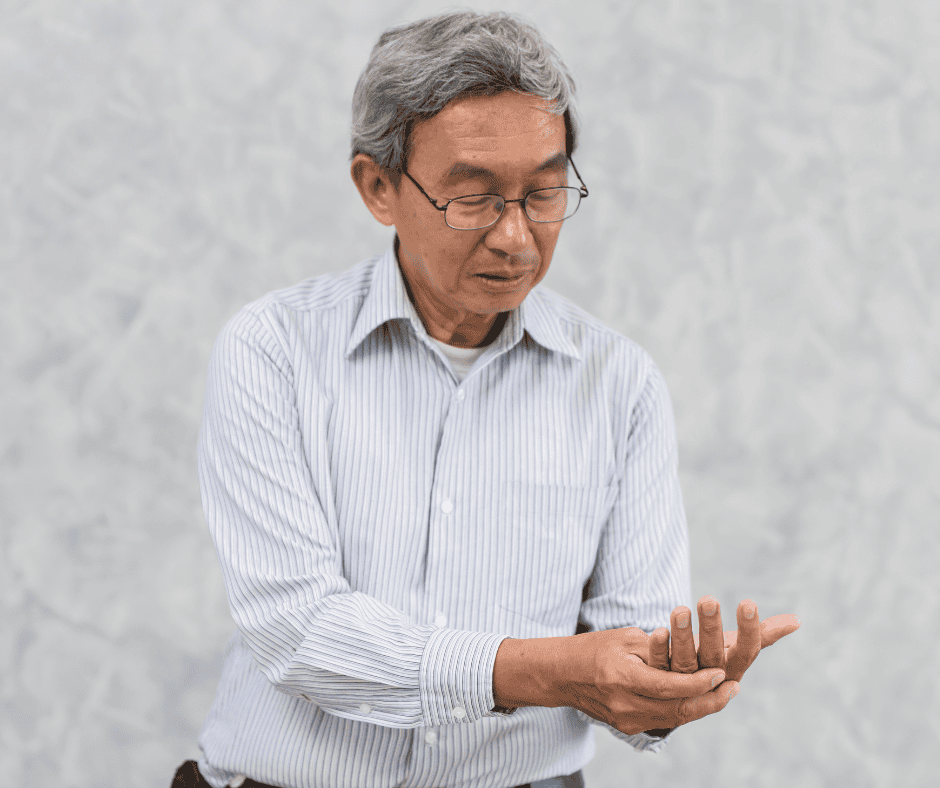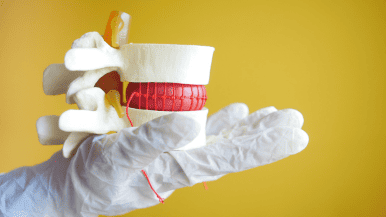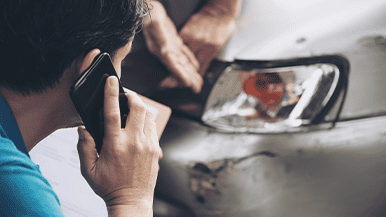
- What Causes Trigger Finger?
- Symptoms of Trigger Finger
- Trigger Finger Treatment
- Recovery After Outpatient Surgery
Trigger finger, also known as stenosing tenosynovitis of the finger, is a condition where a finger, usually the thumb, is locked in a bent-down position and unable to straighten out on its own.
Inflammation of the hand tendons causes pain in the trigger finger. Roughly 2% of the general population develop trigger fingers, and they are most common among older women. The tendons responsible for moving the fingers start in the forearm and extend into the hand, forming a narrow shaft. One tendon bends the finger near the top, while another bends it at the middle joint.
A trigger finger can cause fingers to become stuck in a downward position or make it uncomfortable to straighten back up. In severe cases, people may be unable to move their fingers. The condition can worsen in the morning if someone sleeps with their finger down all night.
What Causes Trigger Finger?
 Overuse and repetitive strain on the hand can trigger a trigger finger. As the tendons move through the sheath tunnel, they can become inflamed over time and develop bumps, which can affect the normal functioning of the fingers.
Overuse and repetitive strain on the hand can trigger a trigger finger. As the tendons move through the sheath tunnel, they can become inflamed over time and develop bumps, which can affect the normal functioning of the fingers.
It can be challenging to identify the precise reasons for trigger finger, although certain factors can increase the likelihood of developing it. Trigger finger is more commonly observed in women compared to men and is most prevalent among individuals aged 40 to 60. Certain conditions, such as rheumatoid arthritis, gout, and diabetes, have been associated with an increased occurrence of trigger finger.
Additionally, physical activities or repetitive movements may cause trigger finger. These activities could include repetitive movements when performing farm work, factory work, or playing a musical instrument. The exertion caused by continuous, firm gripping of sporting equipment or power tools may also trigger the development of trigger finger.
Symptoms of Trigger Finger
Trigger finger can cause a range of symptoms, from occasional, harmless snapping of the finger to severe debilitation and pain. The condition can be particularly painful when the finger is locked in a downward position in the palm.
Although the thumb, middle, or ring fingers are most commonly affected, numerous fingers can be afflicted simultaneously.
Common symptoms of trigger finger:
- Limited movement of the finger
- Pain, sensitivity, or bumps at the base of the finger
- An inability to straighten a locked, bent-down finger
- A popping or clicking feeling when moving the finger
Trigger Finger Treatment
 Nonsurgical Treatment
Nonsurgical Treatment
If symptoms are mild, one may rest, splint, and avoid repetitive gripping motions to allow the tendons to relax until the problem is resolved. A patient’s doctor might advise anti-inflammatory medication to ease pain and discomfort.
Additionally, stretching exercises can help improve the finger’s mobility and function. However, the most effective trigger finger treatment is a steroid or cortisone injection into the tendon sheath.
Surgery
If conservative methods fail to relieve the symptoms of trigger finger, outpatient surgery can be considered a last-resort solution. During surgery, an orthopedic surgeon will aim to release the tunnel and free the pulley at the base of the finger, which will help the tendons move more smoothly through the tendon sheath. During the outpatient procedure, the surgeon will make a small incision at the finger’s base and remove the affected portion of the sheath tunnel. Finally, the tunnel area will be closed with two small stitches and covered with a large band-aid for about ten days.
Recovery After Outpatient Surgery
Surgery typically resolves most patients’ symptoms completely. Many can move their fingers right after the procedure. Once the incision is healed, the tendon will easily slide through the sheath tunnel, thus restoring normal finger function. In some cases, physical and hand therapy may be recommended to restore optimal finger use.
If you’re experiencing pain in your fingers, hands, or wrists, talk to one of our orthopedic specialists about a custom treatment plan so you can freely move without pain.



